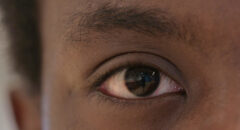
Diabetes can affect several of the body’s organs, including its largest – the skin. While there are certain skin conditions that anyone can develop, it’s been shown that people with diabetes are more likely to have these issues. These 12 skin problems could be a sign that you need to see your doctor.
1. Hard, Colored Patches
This is a condition known as necrobiosis lipoidica and it usually starts as small, raised bumps that look like pimples.
Over time, however, these bumps turn into hard, swollen patches that can be red, yellow, or brown. The surrounding skin might also be shiny while the patches are itchy and painful. It’s best to see a dermatologist for treatment as this condition can lead to complications.
2. Dark, Velvety Skin
Known as acanthosis nigricans, this condition mostly affects the back of the neck, armpit, and groin.
The dark patch of skin usually indicates that you’re prediabetic and have too much insulin in your blood. The only way forward is to get tested and manage your diabetes.
3. Hard, Thick Skin
In this condition, the skin on your fingers and toes gets hard and thick making them hard to move.
Over time, digital sclerosis can spread to the arms, neck, shoulders, knees, ankles, and elbows. The problem generally develops in people who are having trouble managing their diabetes so it’s a sure sign that you need to get tested.
RELATED: Caring For Your Skin With Diabetes
4. Sudden Blisters
With bullosis diabetricorum, you develop blisters on your hands, feet, legs, or forearms that are similar to the ones that happen after a bad burn. You may notice a large blister or a group of small ones.
The blisters are typical for diabetics and it’s important to avoid getting an infection. If you see them, make sure to see a doctor for testing as well as controlled treatment of the blisters.
5. Frequent Skin Infections
Anybody can develop a skin infection but people with diabetes are more prone to them.
These infections are characterized by hot, swollen areas that are painful or an itchy rash with a discharge. You should see a doctor to treat the issue quickly and let them know if you’ve been having infections frequently.
6. Unexplained Open Wounds Or Sores
One issue with diabetes is that it causes poor blood circulation and nerve damage. As a consequence, even the smallest cuts can have trouble healing – especially if they occur on your feet.
These open wounds are known as diabetic ulcers and can easily become infected. It’s recommended to check your feet daily for any cuts and get treatment immediately if you have them.
7. Shin Spots
In diabetic dermothapy, you’ll notice a dark spot or line on your shin, which can also cause a slight depression. In rare cases, the spot may appear on your arms or thighs. The spots can also be permanent or disappear after a year or two. Unless your diabetes is being managed, the spots will continue to appear.
8. Appearance Of Small, Red-yellow Bumps
When dealing with eruptive xanthomatosis, you’ll see the sudden appearance of bumps that look like pimples. However, these bumps soon develop a yellowish color while being tender and itchy.
You’ll usually find the bumps on the back of the knees, thighs, or buttocks but they can develop anywhere. Generally, this condition is a sign that your diabetes is not being managed properly and will only resolve once that’s taken care of.
7. Appearance Of Red, Raised Bumps
Doctors are still establishing the link between diabetes and granuloma annulare. However, the red or flesh-colored raised bumps have been found on large areas of skin in several diabetics. It’s best to get tested if you have it so your condition can be controlled.
8. Very Dry And Itchy Skin
High blood sugar and poor circulation can make the skin dry and itchy. This will be harder to manage than generally itchy skin so talk to your doctor if you’ve been having this issue.
9. Yellowish, Scaly Patches
This condition is called xanthelasma and you’ll notice yellowish scaly patches around your eyelids. It’s caused by high fat levels in the blood when diabetes is poorly controlled. The only solution is to manage your illness.
10. Numerous Skin Tags
While anyone can develop skin tags, having a lot of them has been associated with diabetes. These tags usually appear on the eyelids, neck, armpit, and groin so let your doctor know if you have more than a few so you can get tested.
If you’re noticing changes in your skin, talk to your doctor about getting tested for diabetes. You might be more prone to skin conditions but that doesn’t mean you can’t prevent them from happening or worsening.








